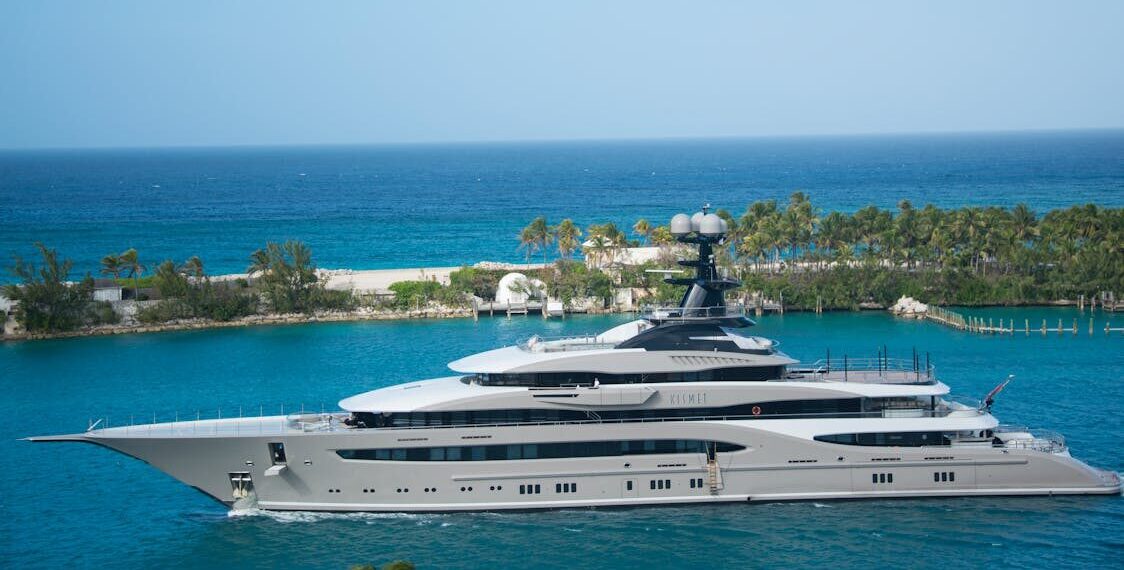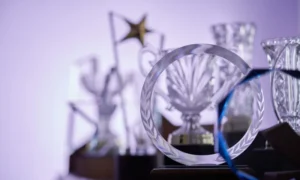Luxury yachting is evolving. What was once all about size, sleek lines, and high-end finishes is now shifting toward something much more forward-thinking: environmental responsibility. While comfort and performance still matter, there’s growing recognition that luxury doesn’t have to come at the expense of the planet.
With marine emissions under tighter scrutiny and buyers becoming more climate-conscious, the demand for eco-friendly yachts is growing fast. Builders and designers aren’t just following this trend—they’re helping lead it, incorporating cleaner propulsion systems, smarter onboard energy use, and sustainable materials that reduce environmental impact without compromising range or usability.
The Demand for Sustainable Yachting
According to the International Maritime Organization (IMO), the maritime industry contributes roughly 2.8% of global greenhouse gas emissions. While most of that comes from commercial shipping, private luxury yachts are increasingly being called out for their outsized emissions per user. Some superyachts can burn through hundreds of liters of fuel an hour, leaving behind a significant carbon footprint.
That’s prompted many yacht owners—and future buyers—to take a closer look at how their lifestyle choices align with a changing world. In response, naval architects and yacht builders are reconsidering everything from propulsion systems to hull materials. Sustainability is no longer a niche concern. It’s becoming a core part of what defines a modern yacht.
Today’s luxury yachts aren’t just about power and prestige. They’re being designed for better fuel efficiency, lower emissions, and smarter resource use. And for many buyers, investing in the right luxury yacht means factoring in long-term environmental impact just as much as speed or styling.
The Core Innovations Behind Eco‑Friendly Yachts
Luxury yacht design is undergoing a significant change as sustainability drives innovation, and designers begin to deploy advanced technologies to reduce environmental impact without compromising comfort.
Hybrid and Electric Propulsion
Some of the most notable progress has come from industry-leading companies like Feadship, Sunreef Yachts, and Silent Yachts, who are paving the way with hybrid and fully electric propulsion systems. Feadship’s Valor, for example, includes a lithium-ion battery system large enough to support two full days of silent, zero-emission cruising. When paired with HVO biofuel, it can reportedly cut carbon emissions by up to 90%.
These systems don’t just save fuel. They reduce maintenance, eliminate engine noise, and create a much smoother experience for those on board.
Hull and Material Innovation
Traditional fiberglass hulls may be durable, but they’re nearly impossible to recycle. Once they’ve reached the end of their life, they usually end up in landfills. That’s pushed many builders to explore alternatives like bio-based resins, flax fiber, and recycled aluminum, which offer similar strength at a lower environmental cost. These materials also help reduce weight, which means better fuel economy over time.
Renewable Energy Integration
Solar arrays and wind-assist features have become integral to modern eco-yacht design, especially on catamarans and hybrid vessels, where energy independence is a priority. The Silent 60 catamaran, for example, features a solar array that can generate up to 100 kWh per day, supporting day-to-day operations and even propulsion. Optional kite sails help reduce drag and give solar systems a backup boost.
AI and Smart Energy Systems
AI technology is playing a growing role in modern yacht systems. It helps manage power use by balancing energy loads across propulsion, batteries, and onboard amenities like lighting and HVAC. By analyzing real-time demand, AI can adjust power distribution automatically, improving efficiency and extending the cruising range.
Beyond energy management, AI is also used for predictive maintenance, identifying mechanical issues before they cause failures. Some systems assist with route planning by factoring in weather, sea conditions, and fuel use to suggest more efficient paths. These tools not only reduce emissions but also simplify operations for both crew and owners.
The Broader Impact on the Yacht Lifestyle
As sustainability becomes a key focus in yacht design, it’s also reshaping how owners approach life at sea. With quieter propulsion and better energy autonomy, owners can spend longer stretches off-grid, away from ports and fuel docks. That kind of freedom appeals to a new generation of yacht buyers who are less interested in flash and more focused on flexibility.
It also aligns with larger lifestyle trends. Digital nomads, health-focused travelers, and long-distance cruisers are increasingly drawn to low-maintenance, energy-efficient setups that allow them to live and work at sea. Solar panels, smart batteries, and efficient HVAC systems make it possible to cruise for days, or even weeks, without needing to recharge at shore.
And if you’re shopping with those priorities in mind, browsing through today’s yachts for sale shows how far the industry has come. Many newer builds now include hybrid engines, energy storage systems, and recycled or recyclable materials as standard, not premium upgrades.
Market Outlook: The Future of Sustainable Yachts
The business side of yachting is also adapting. As eco-friendly yachts continue transforming the luxury boating industry, more builders are investing in hybrid systems, clean energy integration, and recyclable materials.
According to Mordor Intelligence, the luxury yacht segment—including electric and hybrid models—is projected to grow from around $10.12 billion in 2025 to $13.79 billion by 2030, at a compound annual growth rate (CAGR) of 6.4%. The zero-emission yacht segment is expected to grow even faster, at roughly 15.9% CAGR from 2026 to 2033.
Government regulations also play a major role. The IMO’s Energy Efficiency Existing Ship Index (EEXI) and Carbon Intensity Indicator (CII) aim to reduce emissions from all vessels over 5,000 gross tonnage. Targets include a 40% reduction in carbon intensity by 2030 compared to 2008 levels.
On the innovation front, builders are experimenting with emerging technologies like:
- Hydrogen fuel cells that offer quiet, emission-free propulsion
- Graphene-infused hulls that are stronger and lighter than traditional options
- Biodegradable coatings that reduce marine pollution and eliminate toxic paint runoff
What started as a few niche ideas are quickly becoming foundational to how new yachts are conceived, built, and sold.
Final Thoughts: Why This Matters Now
Sustainability is no longer a fringe feature in yacht design; it’s a central part of the conversation. Buyers, builders, and regulators are all pushing for better performance that also meets higher environmental standards. From propulsion and power to materials and maintenance, the innovations driving the eco-friendly yacht movement are shaping what the future of luxury at sea looks like.
Ongoing investment in these areas helps builders meet compliance standards while giving owners more efficient, future-ready vessels. If things continue in this direction, the next generation of yachts won’t just be beautiful or powerful. They’ll be smarter, cleaner, and built to last.
For more stories on how innovation is changing the way industries operate, check out the latest insights at TechBullion.



































